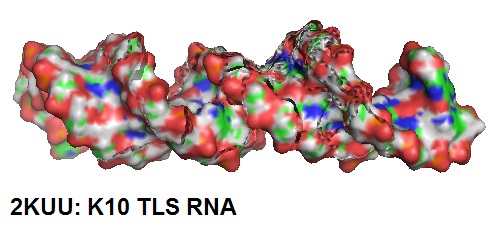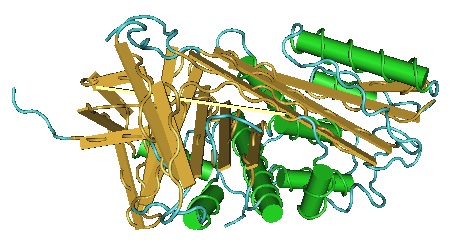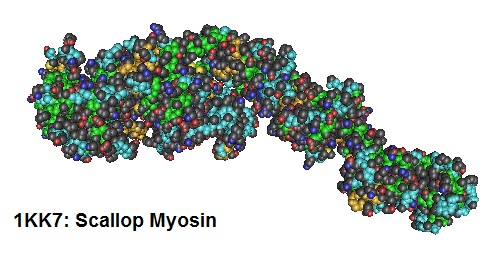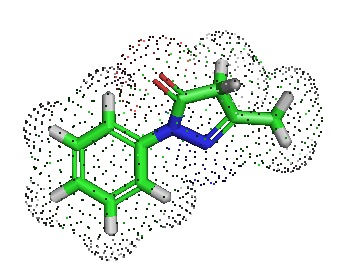|
|
|
Bio-Synthesis Newsletter - November 2017
|
RNA helices transport mRNA
 In drosophila,
A’-form RNA helices
drive microtubule-based mRNA transport. Bullock et al.,
in 2010, used NMR spectroscopy to describe the first tertiary structure of an RNA element responsible for mRNA transport. Microtubule-based
mRNA transport is used to restrict protein expression in the cell. Specific protein expression defines cell polarity and axis determination
for neuronal function. The report of this structure adds to our understanding of cis-acting mRNA localization signals by
molecular motor
complexes. The K10
transport localization element is a 44 nucleotide regulatory element. This RNA structure is responsible for the transport and anterior
localization of k10 mRNA in the oocyte in which it establishes dorsoventral polarity. In drosophila,
A’-form RNA helices
drive microtubule-based mRNA transport. Bullock et al.,
in 2010, used NMR spectroscopy to describe the first tertiary structure of an RNA element responsible for mRNA transport. Microtubule-based
mRNA transport is used to restrict protein expression in the cell. Specific protein expression defines cell polarity and axis determination
for neuronal function. The report of this structure adds to our understanding of cis-acting mRNA localization signals by
molecular motor
complexes. The K10
transport localization element is a 44 nucleotide regulatory element. This RNA structure is responsible for the transport and anterior
localization of k10 mRNA in the oocyte in which it establishes dorsoventral polarity.
|
|
Read More
|
|
|
PEDF determines Stem Cell Fate
 Pigment epithelium-derived factor (PEDF) is a secreted glycoprotein widely expressed in multiple organs. PEDF exhibits multiple functions
including antiangiogenic,
antitumor, anti-inflammatory, and neurotrophic properties, among others. PEDF is important for bone
development as well as for the modulation of resident stem cell populations in the brain, muscle, and eye. PEDF also promotes
stem cell renewal, and two functional epitopes
have been identified. A PEDF-derived short peptide (PSP) is known to induce satellite cell proliferation and
promotes muscle regeneration.
Whereas a 44-amino acid peptide fragment of PEDF binds receptors on the surfaces of different neuron types were it determines neurotrophic
activity and neuronal differentiation.
Pigment epithelium-derived factor (PEDF) is a secreted glycoprotein widely expressed in multiple organs. PEDF exhibits multiple functions
including antiangiogenic,
antitumor, anti-inflammatory, and neurotrophic properties, among others. PEDF is important for bone
development as well as for the modulation of resident stem cell populations in the brain, muscle, and eye. PEDF also promotes
stem cell renewal, and two functional epitopes
have been identified. A PEDF-derived short peptide (PSP) is known to induce satellite cell proliferation and
promotes muscle regeneration.
Whereas a 44-amino acid peptide fragment of PEDF binds receptors on the surfaces of different neuron types were it determines neurotrophic
activity and neuronal differentiation.
|
|
Read More
|
|
|
Engineering RNA as a molecular motor
 Researchers have recently shown that strands of RNA can be used as
part of a molecular motor. A research group has now created a molecular motor in which RNA replaces the protein arm of myosin. This new
protein-RNA hybrid is reported to
move faster than previously designed protein motors or DNA motors. Also, the direction of motion can be changed by adding
DNA strands with specific sequences. A tetramer
form of this motor system was demonstrated to walk along a fixed actin filament at speeds of 10 to 20 nm per second. The goal is using this
type of motors as a molecular delivery system in living cells.
Researchers have recently shown that strands of RNA can be used as
part of a molecular motor. A research group has now created a molecular motor in which RNA replaces the protein arm of myosin. This new
protein-RNA hybrid is reported to
move faster than previously designed protein motors or DNA motors. Also, the direction of motion can be changed by adding
DNA strands with specific sequences. A tetramer
form of this motor system was demonstrated to walk along a fixed actin filament at speeds of 10 to 20 nm per second. The goal is using this
type of motors as a molecular delivery system in living cells.
|
|
Read More
|
|
|
Edaravone, a new drug for ALS
 The drug
edaravone or radicaval is now approved for the
treatment of amyotrophic
lateral sclerosis (ALS). ALS is a progressive, adult-onset fatal disease. Edaravone is a neuroprotective drug with properties of a free
radical scavenger. In the central nervous system, edaravone acts as a potent scavenger of oxygen radicals. Presently, it is thought that edaravone
potentially reduces oxidative stress. In ALS mouse models, it was shown that edaravone suppresses motor function decline and nitration of tyrosine
residues in the cerebrospinal fluid. Protein tyrosine nitration under disease conditions is a commonly observed chemical modification.
Tyrosine nitration,
for example in peptides or proteins, is mediated by reactive nitrogen species such as the peroxynitrite anion as well as nitrogen dioxide
radicals.
The drug
edaravone or radicaval is now approved for the
treatment of amyotrophic
lateral sclerosis (ALS). ALS is a progressive, adult-onset fatal disease. Edaravone is a neuroprotective drug with properties of a free
radical scavenger. In the central nervous system, edaravone acts as a potent scavenger of oxygen radicals. Presently, it is thought that edaravone
potentially reduces oxidative stress. In ALS mouse models, it was shown that edaravone suppresses motor function decline and nitration of tyrosine
residues in the cerebrospinal fluid. Protein tyrosine nitration under disease conditions is a commonly observed chemical modification.
Tyrosine nitration,
for example in peptides or proteins, is mediated by reactive nitrogen species such as the peroxynitrite anion as well as nitrogen dioxide
radicals.
|
|
Read More
|
|
|
|
|
Bio-Synthesis, Inc.
800 Mario Court, Lewisville, TX 75057, USA
Toll Free: 800.227.0627 | 1.972.420.8505 (Intl.)
|
|
|
|
|
|